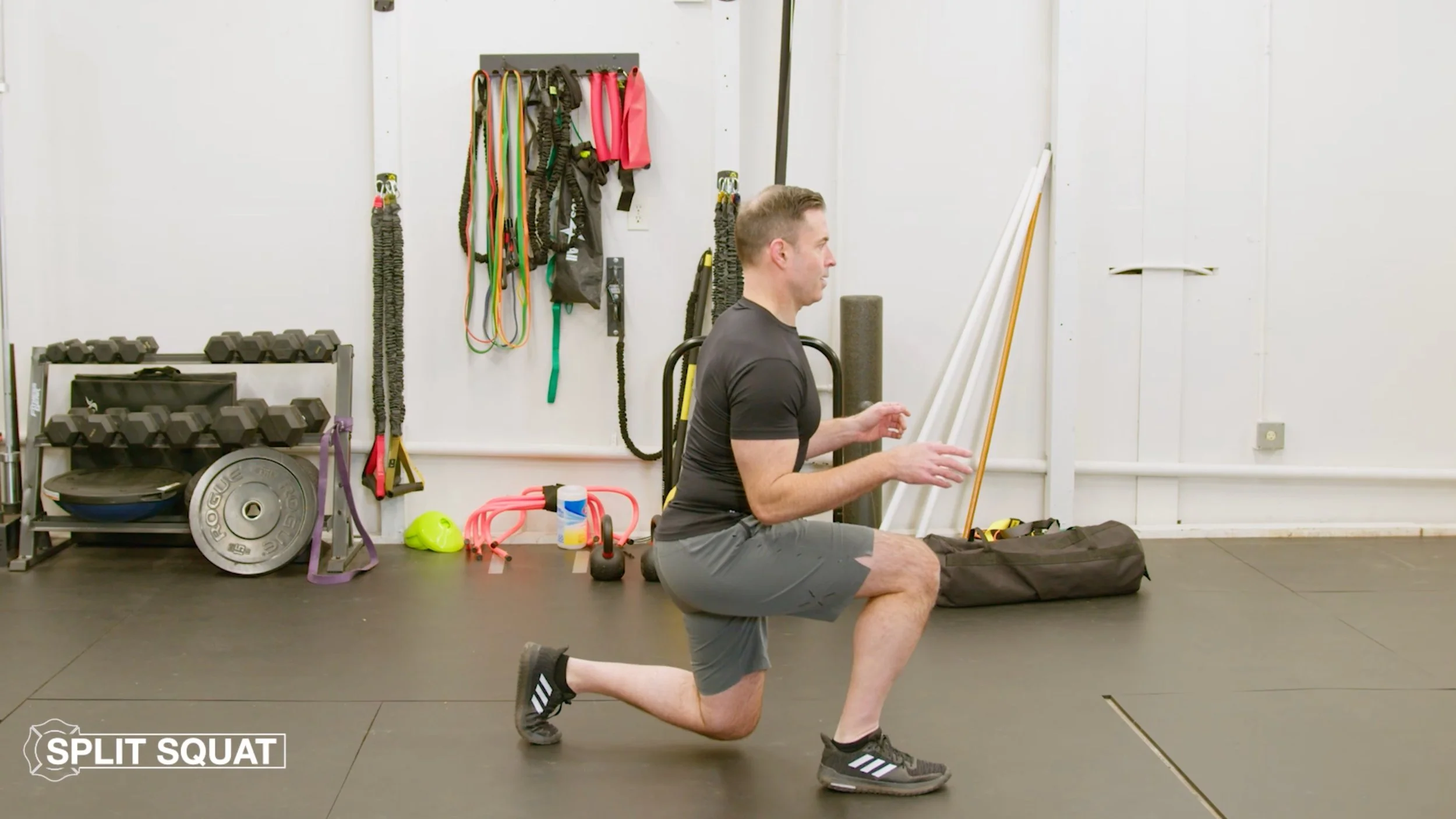Performance Training Exercise: Split Squat
By Ryan Provencher
The "Bodyweight Split Squat" exercise utilizes the Lunge Movement Pattern to develop strength, endurance, and stability for firefighting tasks such as climbing stairs and hose deployment.
This exercise may be performed in open space (featured here), or may be performed with the assistance of a suspension trainer such as TRX. Adjust exercise tempo and exercise complexity to increase or decrease intensity in your training.
Progression in this exercise includes the “Level 2: Forward Lunge” and “Level 3: Reverse Lunge”.
Starting Position:
Stand upright with your feet hip-width apart.
Take a step backward with one foot (about 2-3 feet), positioning it behind you.
Keep your torso upright and engage your core muscles for stability.
Distribute your weight evenly between both feet.
Downward Movement:
Begin the descent by bending both knees simultaneously.
Lower your body straight down towards the ground, maintaining an upright torso and keeping your front knee aligned with your ankle.
Allow your back knee to gently bend and approach the ground without making contact.
Lower your body until your front thigh is parallel to the ground or as low as comfortably possible.
Keep your chest lifted and gaze forward to maintain balance.
Ensure your front knee does not extend past your toes to prevent strain on the knee joint.
Upward Movement:
Engage your quadriceps, glutes, and hamstrings to push through your front heel.
Straighten your front leg and drive your body upward.
Maintain control and balance as you return to the starting position.
Push through the entire foot of your front leg to activate the muscles effectively.
As you ascend, avoid locking out your knee completely to maintain tension in the muscles.
Once fully upright, pause briefly before initiating the next repetition.
6-Point Self-Check
Maintain proper body position and movement quality for each repetition as fatigue sets in. Be mindful of this quick "Self-Check" as you perform this exercise as directed above:
Head: Maintain a neutral position with eyes forward, avoid moving head up or down.
Torso: Keep the torso upright and rigid through the downward and upward movement.
Hips: Keep hips engaged and stable as you lower the back knee to 90 degrees.
Legs: Front and back leg are at 90 degrees in the bottom position, avoid leaning over the front leg.
Shoulders: Shoulders are packed back and down throughout the movement.
Arms: Arms are relaxed in the "ready position" in front of you.
Other Resources:
Link to Dynamic Warm-Up Exercise: Knee to Chest / Heel to Glute
Link to Flexibility Cool-Down Exercise: 90/90 Hip Stretch
Go to Your Firefighter Peak Performance Free Membership
Ryan Provencher is an Operations Battalion Chief with over 30 of Fire Service experience. He holds a Bachelor of Science in Kinesiology and Exercise Science with a Minor in Nutrition from Washington State University. He has extensive experience as a Fire Department Peer Fitness Trainer and Health/Fitness Coordinator, he is the founder of Firefighter Peak Performance and serves as Executive Fitness Advisor for CRACKYL Magazine.

